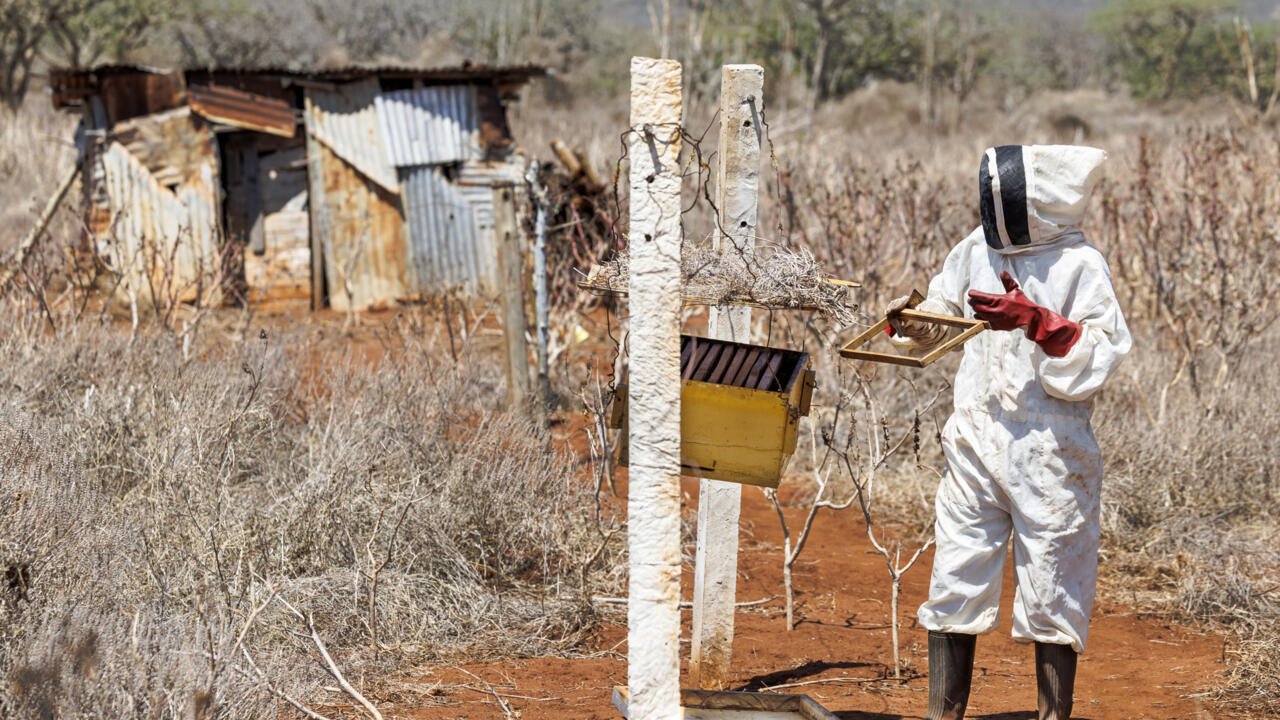Elephant conservation has been a roaring success: numbers in Tsavo rose from around 6,000 in the mid-1990s to almost 15,000 elephants in 2021, according to the Kenya Wildlife Service (KWS).But the human population also expanded, encroaching on grazing and migration routes for the herds. Resulting clashes are becoming the number one cause of elephant deaths, says KWS.
A nine-year study published last month found that elephants avoided farms with the ferocious bees 86 percent of the time.
The deep humming of 70,000 bees is enough to make many flee, including a six-tonne elephant
It has been effective, but recent droughts, exacerbated by climate change, have raised challenges. It is also expensive – about 150,000 Kenyan shillings ($1,100) to install hives – well beyond the means of subsistence farmers, though the project organisers say it is still cheaper than electric fences.
“An elephant ripped off my roof, I had to hide under the bed because I knew I was going to die,” said a less-fortunate neighbour, Hendrita Mwalada, 67.
For those who can’t afford bees, Save the Elephants offers other solutions, such as metal-sheet fences that clatter when shaken by approaching elephants, and diesel- or chilli-soaked rags that deter them.


